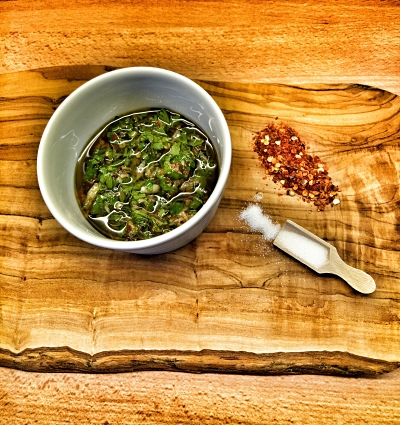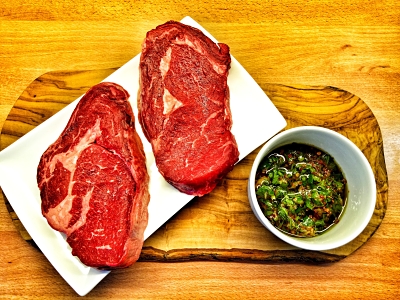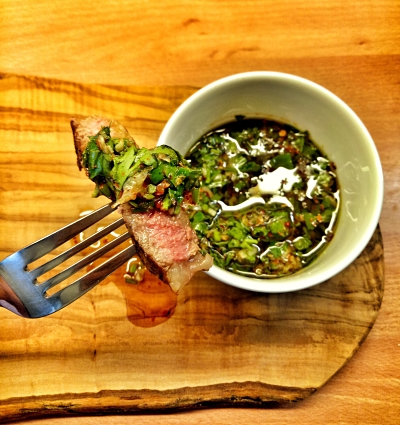BY ADELINE LIM
Anyone who has been to a South American restaurant specialising in barbecued meat has probably been introduced to a sauce called chimichurri. It is ubiquitous in Argentina and Uruguay and even the Brazilian churrascarias have adopted it.
I was introduced to the verde version of this condiment at a Brazilian churrascaria in Sydney by my carnivorous Brazilian friend. She said, in her exotic accent, “Once you have it, you can never have your steak ‘naked’ again.” And she was right, it was addictive. It goes with everything, grilled pork, beef, chicken, sausages… chimichurri even makes grilled chicken hearts scrumptious.
I had not afforded it any consideration until recently, when the pandemic hit. Sitting around with too much time on our hands, we start to ponder everything that we ordinarily take for granted. Chimichurri for an instance.
What is Chimichurri?
Chimichurri is a herb-based condiment made from parsley, dried oregano and garlic in a base of olive oil and red wine vinegar, seasoned with salt and pepper. It’s a simple enough condiment, very popular with the Argentinian and Uruguayan gauchos – skilled horsemen who run cattle in the ranges. Their diet was composed mostly of grilled beef – asado, which they carved with their large knives, and dressed with generous helpings of chimichurri.
The great thing about chimichurri is that its recipe is not set in stone. You can tweak it to your taste. Like more oregano? Sure! Prefer fresh oregano to the dried version? No problem! Like your sauce a bit more garlicky? No worries!

What’s in the name?
The origin of the name itself is debatable. Some say it is a corruption of English words. A popular urban myth says it came about when the British soldiers were in Argentina and kept saying ‘give me curry’ to the locals. Another school of thought states that chimichurri was derived from a mangled version of Jimmy Curry, supposedly a meat trader. Its etymology most likely came from the Basques who settled in Argentina in the 19th century. The gist of tximitxurri in Basque means ‘a mixture of several things in no particular order’.
However, chimichurri was not mentioned in historic recipes and books chronicling the food of Latin America before 1991. And it appears that the sauce only came into prominence after recipe books specialising in grilling became fashionable. Food historian and scholar, Staffan Terje, said that chimichurri is practically identical to the Sicilian salmoriglio – a sauce they use chiefly on seafood and vegetables. It might be possible that chimichurri evolved from salmoriglio as a result of the wave of Italian migration to Argentina in the mid 19th century.
Whatever its origin, whatever its etymology, how chimichurri came to be, it matters not. For one cannot help but heap generous amounts of chimichurri to asado grilled to perfection, and then proceed to lie down in self defence.

About the author
Adeline Lim is a serial traveller with an insatiable appetite for good food. She eats almost everything, and is willing to try anything; she loves her beer and wine and everything in between. More about Adeline here.

